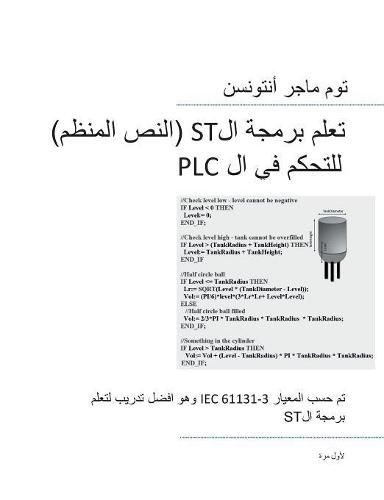Readings Newsletter
Become a Readings Member to make your shopping experience even easier.
Sign in or sign up for free!
You’re not far away from qualifying for FREE standard shipping within Australia
You’ve qualified for FREE standard shipping within Australia
The cart is loading…






This title is printed to order. This book may have been self-published. If so, we cannot guarantee the quality of the content. In the main most books will have gone through the editing process however some may not. We therefore suggest that you be aware of this before ordering this book. If in doubt check either the author or publisher’s details as we are unable to accept any returns unless they are faulty. Please contact us if you have any questions.
This book gives an introduction to Structured Text (ST), used in Programmable Logic Control (PLC). The book can be used for all types of PLC brands including Siemens Structured Control Language (SCL) and Programmable Automation Controllers (PAC). CONTENTS - Background, advantage and challenge when ST programming - Syntax and fundamental ST programming - Widespread guide to reasonable naming of variables - CTU, TOF, TON, CASE, STRUCT, ENUM, ARRAY, STRING - Guide to split-up into program modules and functions - More than 90 PLC code examples in black/white - FIFO, RND, 3D ARRAY and digital filter - Examples: From LADDER to ST programming - Guide to solve programming exercises Many clarifying explanations to the PLC code and focus on the fact that the reader should learn how to write a stable, robust, readable, structured and clear code are also included in the book. Furthermore, the focus is that the reader will be able to write a PLC code, which does not require a specific PLC type and PLC code, which can be reused. The basis of the book is a material which is currently compiled with feedback from lecturers and students attending the AP Education in Automation Engineering at the local Dania Academy, Erhvervsakademi Dania , Randers, Denmark. The material is thus currently updated so that it answers all the questions which the students typically ask through-out the period of studying. The author is Bachelor of Science in Electrical Engineering (B.Sc.E.E.) and has 25 years of experience within specification, development, programming and supplying complex control solutions and supervision systems. The author is Assistant Professor and teaching PLC control systems at higher educations in Denmark LinkedIn: https: //www.linkedin.com/in/tommejerantonsen/
$9.00 standard shipping within Australia
FREE standard shipping within Australia for orders over $100.00
Express & International shipping calculated at checkout
This title is printed to order. This book may have been self-published. If so, we cannot guarantee the quality of the content. In the main most books will have gone through the editing process however some may not. We therefore suggest that you be aware of this before ordering this book. If in doubt check either the author or publisher’s details as we are unable to accept any returns unless they are faulty. Please contact us if you have any questions.
This book gives an introduction to Structured Text (ST), used in Programmable Logic Control (PLC). The book can be used for all types of PLC brands including Siemens Structured Control Language (SCL) and Programmable Automation Controllers (PAC). CONTENTS - Background, advantage and challenge when ST programming - Syntax and fundamental ST programming - Widespread guide to reasonable naming of variables - CTU, TOF, TON, CASE, STRUCT, ENUM, ARRAY, STRING - Guide to split-up into program modules and functions - More than 90 PLC code examples in black/white - FIFO, RND, 3D ARRAY and digital filter - Examples: From LADDER to ST programming - Guide to solve programming exercises Many clarifying explanations to the PLC code and focus on the fact that the reader should learn how to write a stable, robust, readable, structured and clear code are also included in the book. Furthermore, the focus is that the reader will be able to write a PLC code, which does not require a specific PLC type and PLC code, which can be reused. The basis of the book is a material which is currently compiled with feedback from lecturers and students attending the AP Education in Automation Engineering at the local Dania Academy, Erhvervsakademi Dania , Randers, Denmark. The material is thus currently updated so that it answers all the questions which the students typically ask through-out the period of studying. The author is Bachelor of Science in Electrical Engineering (B.Sc.E.E.) and has 25 years of experience within specification, development, programming and supplying complex control solutions and supervision systems. The author is Assistant Professor and teaching PLC control systems at higher educations in Denmark LinkedIn: https: //www.linkedin.com/in/tommejerantonsen/